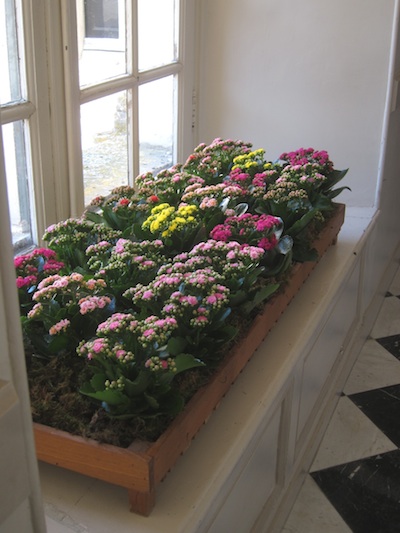
Versatile window boxes can be planted for the season. © iStockphoto.com/Jorge Antonio
In honor of Groundhog Day, this might be a good time to review what some of the green prognostications for 2014.
Window boxes. What better way to get a little flower and color when you have a small garden, apartment or condo? If you can have only one, mount it at a window you look out often, such as at the kitchen sink.
Cable ties can be used to affix a window box to a railing on a balcony or around a deck or porch. If you can’t attach it outside, consider using the box at a sunny, indoor window.

If you can't put a window outside, put it indoors. Photo courtesy of Anthony Tesselaar.
For spring, buy potted tulips and daffodils to plop in the window box. Tuck in a few pansies, nasturtiums, forget-me-nots or sedums. Change out the window box for the seasons with summer annuals or perennials; cool-season snapdragons, osteospermum, ornamental grasses or pansies for fall; and fresh greens, colorful branches and dried flowers or seed heads for winter.
The industry should do its best to cater this demand with compact trees and plants, and drought tolerant species for wind-blown balconies, said Anthony Tesselaar, who has introduced many plants, including Tropicanna cannas, Flower Carpet roses and Bonfire begonias.
Food plants. Pretty ones, such as the dwarf, yet prolific, blueberries and raspberries, specially bred for growing in all-weather pots are terrific. Growing food in containers will continue to be popular for those with small space gardens or limited sun. Lightweight containers are easiest to work with, including Smart Pots, which are made of spun recycled materials, and are easily stowed off-season.
“I believe growing your own is driven more by the notion of taking control over the food you put in your mouth and, more importantly, the mouth of your child,” Tesselaar said “And how much people are actually harvesting is irrelevant because any success, however small – is incredibly rewarding.”
Children. No, we aren’t going to eat them, but rather, teach them where food comes from. Tesselaar and others recommend growing food kids will like, such as strawberries instead of radishes, and giving them their own plot or pot. Food gardening also can be used to teach other skills, such as math, geography, ecology and history.